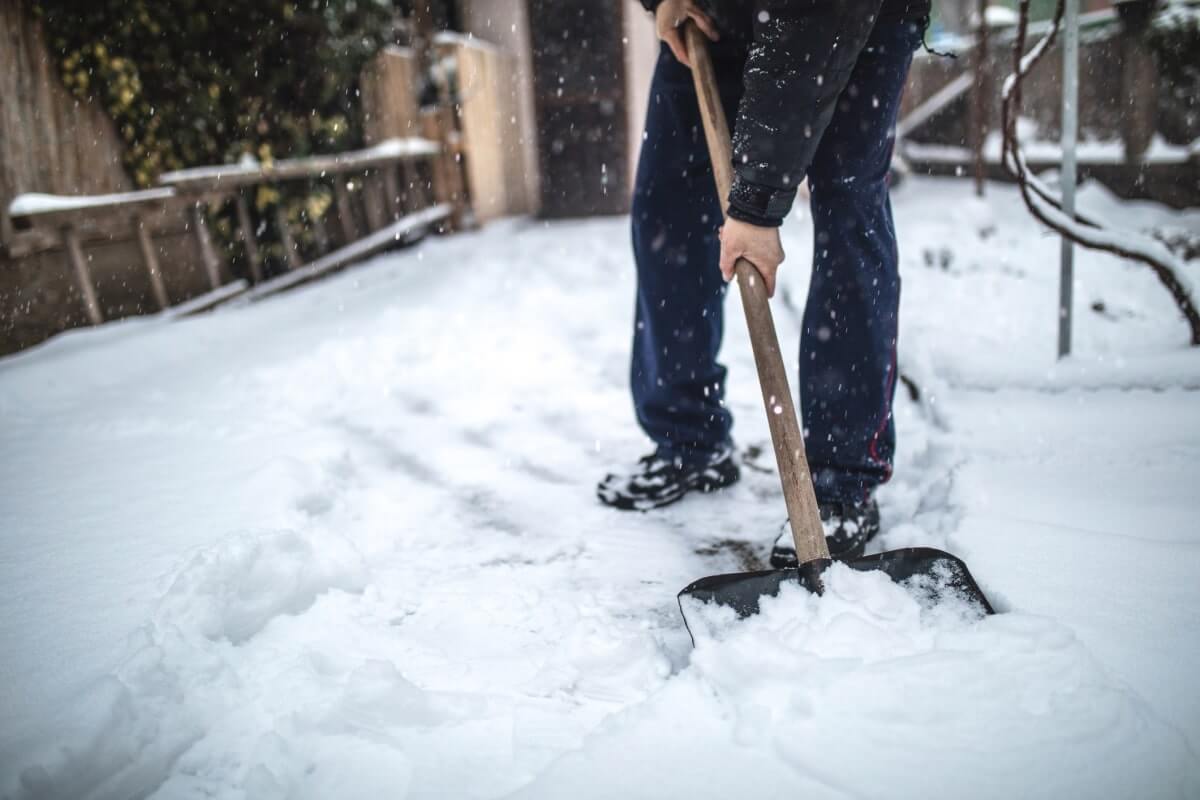
Shoveling snow can be a daunting task during the winter months. Injuries such as shoulder and lower back pain occur frequently. In more severe cases, slips on ice, bone fractures, hypothermia and heart-related ailments may occur.
With some preparation, you can prevent these injuries. At OrthoBethesda, we’re committed to helping residents of our community live a safe and injury-free life during winter.
What Are Common Snow Shoveling Injuries?
Snow shoveling can result in musculoskeletal injuries such as:
- Soft tissue injury
- Bone fracture
- Lacerations (deep cuts on the body)
- Injury to the head, trunk, arm and leg
- Lower back pain
- Shoulder pain
- Heart attacks
Why Do Snow Shoveling Injuries Occur?
A few reasons why snow shoveling injuries occur are:
- Falling
- Overworking muscles
- Getting hit by a shovel
- Hypothermia
- Staying in the snow for too long
- Using the wrong type of shovel
- Working with the wrong shoveling technique
- Wearing inappropriate clothing for the task
- Poor physical fitness
How to Prevent Orthopedic Injuries from Snow Shoveling
Consider these eight tips for preventing orthopedic injuries when shoveling snow:
- Do warm-up exercises: Before you go digging, stretch your muscles, run on the spot or on your treadmill.
- Use a well-designed shovel: Good shovels are normally lightweight, and they have a curved handle designed to stop you from bending and to reduce lifting.
- Use the right shoveling technique: Push snow rather than lifting it. Ensure that you don’t overload your shovel. When you want to lift, make sure you bend your knees and don’t throw snow over your shoulder. Throwing snow and twisting the shovel can cause lower back and shoulder pain after shoveling snow.
- Take frequent breaks: After a quarter of an hour, stand up, walk around and improve blood circulation in your body.
- Drink water: Snow shoveling can be an exhausting task, so drink water to stay hydrated.
- Stop when your body complains: Be conscious of your body’s signals. When you feel pain, discomfort or difficulty breathing, you need to take a break or stop and continue the next day.
- Put on slip-resistant shoes: This will help eliminate the occurrence of slipping and falling on ice. You can also buy a snow melting mat to eliminate snow on the path to your driveway.
- Guard against hypothermia: Put on warm layered clothes. Doing a warm-up will also increase your blood circulation. You can also shovel at mid-day when the temperature is warmer.
Learn More About the Prevention and Treatment of Snow Shoveling Injuries
Want to learn more about how to clear snow without injuring your body? Then contact the OrthoBethesda team today! You can also call us if you have a snow-shoveling injury that needs treatment. We’ll carefully examine your injury and recommend the most effective treatment option for you. You can visit our clinic to enjoy a warm, friendly and unique style of treatment that ensures faster pain relief and total recovery.
